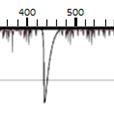Signal and Noise: Cosmic Muons

In this introductory tutorial that, students learn about how to distinguish muon signals from background and instrumental noise.
Getting started with a Cosmic Ray Muon Detector (CRMD) can be overwhelming. There are many parts to identify, assemble and test. How do we know if we have the hardware set up right and all of the settings in the right place to collect meaningful data? The purpose of this activity is to provide an introduction to the role of the threshold setting and the gain setting for the CMRD. Another concept that is useful to understand is why it is necessary to calibrate, or “plateau,” the detector paddles. This activity is designed to be an introductory tutorial that helps students to understand how muon signals appear inside a photomultiplier (PMT), and how to distinguish them from random PMT noise. By explaining how the PMT gain voltage and threshold work together to minimize noise in the data, students can explain the need for the plateauing steps typically undertaken early in a cosmic ray study group.
